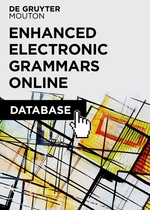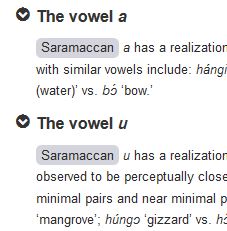 Overview
Overview
- Specially designed for the needs of general linguists and typologists.
- Enables simultaneous complex searches across dozens of languages on hundreds of linguistic phenomena.
- Naturalistic examples illustrate each linguistic phenomenon, together with interlinear glossing and free translation.
- There is a focus on small and endangered languages.
- Permits access to unlimited number of simultaneous users.
- User guide available.
- Trial access available until 31st March 2018.
Aims and scope

Screenshot from Enhanced Electronic Grammars.
Enhanced Electronic Grammars (EEG) features comprehensive descriptions of languages from around the world. Through this unique online resource, full grammars are made available together in an interlinked and semantically-annotated format, allowing granular access to the grammatical data and enabling cross-language research of several grammars at the same time. In addition to cross-linguistic queries, each grammar can also be read and researched individually.
EEG is updated bi-annually, integrating several new grammar publications each year for even more extensive cross-linguistic research.
Languages available in EEG
Bardi, Basque, Berbice Dutch, Cavineña, Domari, Eton, Goemai, Hinuq, Hup, Jamsay,

Screenshot from Enhanced Electronic Grammars.
Kolyma Yukaghir, Lao, Madurese, Mani, Mapuche, Mian, Mongsen Ao, Neverver, Qiang, Saramaccan Creole, Savosavo, Siraya, Teiwa, Toqabaqita, Vaeakau-Taumako (+ Alto Perené, Daakaka, Kulina, Lavukaleve, Mina, Tommo So by the end of 2017).
Access
Via our E-resources trials page.
Your feedback …
… will be most welcome!
